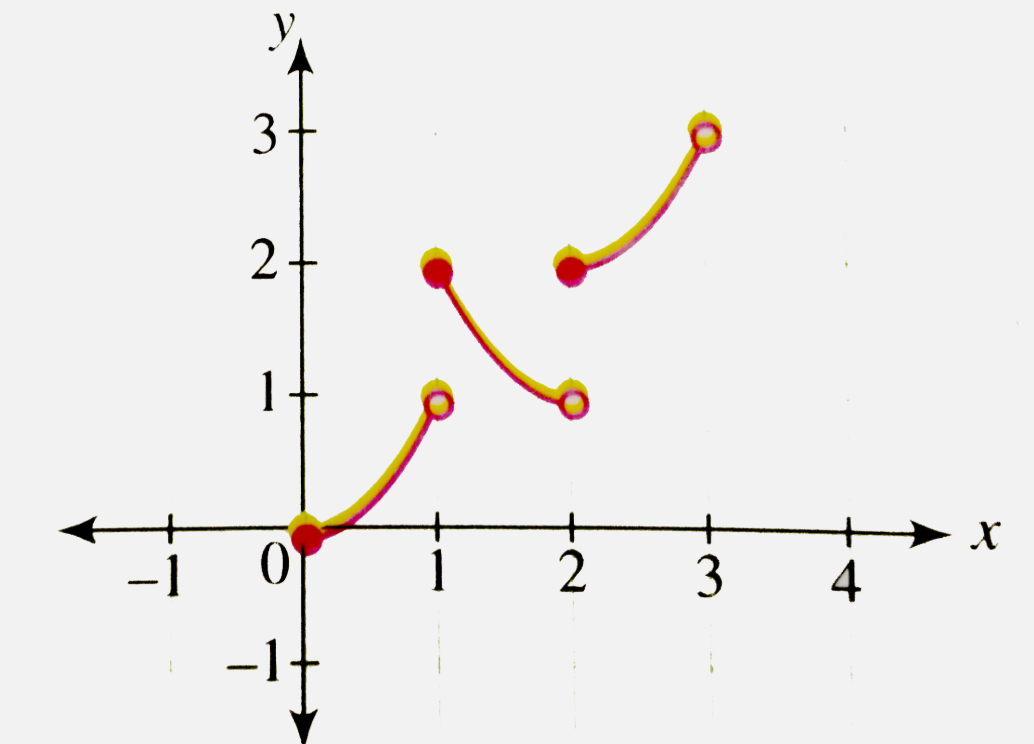Let a>1 be a real number and f(x)=logax2 for x>0. If f−1 is the inverse function fo f and b and c are real numbers then f−1(b+c) is equal toSolution in Tamil
f−1(b).f−1(c)
f−1(b)+f−1(c)
1f(b+c)
1f−1(b)+f−1(c)
The correct Answer is:A
y=2logax
⇒ logax=y2
⇒ x=ay/2
⇒ f−1(y)=ay/2
⇒ f−1(b+c)=ab+c2=ab2.ac2=f−1(b).f−1(c)
Topper's Solved these Questions
- FUNCTIONSBOOK - CENGAGECHAPTER - FUNCTIONSEXERCISE - Multiple Correct Answers Type
10 Videos
- FUNCTIONSBOOK - CENGAGECHAPTER - FUNCTIONSEXERCISE - Comprehension Type
7 Videos
- EQUATION OF PLANE AND ITS APPLICATIONS -IIBOOK - CENGAGECHAPTER - EQUATION OF PLANE AND ITS APPLICATIONS -IIEXERCISE - DPP 3.4
18 Videos
- GETTING STARTED WITH GRAPHSBOOK - CENGAGECHAPTER - GETTING STARTED WITH GRAPHSEXERCISE - Exercise
18 Videos
Similar Questions
The function f(x)=cos−1⎛⎝2[|sinx|+|cosx|]sin2x+2sinx+114⎞⎠ is defined if x belongs to (where [.] represents the greatest integer function)
View SolutionLet f(x)=x2−2x−1∀x∈R Let f:(−∞,a]→[b,∞), where a is the largest real number for which f(x) is bijective. If f:R→R , g(x)=f(x)+3x−1 , then the least value of function y=g(|x|) is
View SolutionLet A(0,6,6), B(6,6,0) and C(6,0,6) are three points and point D is moving on the line x+z−3=0=y. If G is centroid of ΔABC, then minimum value of GD is
View SolutionDoes the following graph pass the vertical or horizontal line test ?

View SolutionLet f(x)=ax2+bx+c where a,b,c are real numbers. Suppose f(x)≠x for any real number x. Then the number of solutions for f(f(x))=x in real numbers x is
View SolutionIf f is a function such that f(0)=2,f(1)=3,andf(x+2)=2f(x)−f(x+1) for every real x, then f(5) is 7 (b) 13 (c) 1 (d) 5
View SolutionLet g(x) be the inverse of an invertible function f(x) which is differentiable at x=c . Then g′(f(x)) equal. (a)f′(c) (b) 1f′(c) (c) f(c) (d) none of these
View SolutionLet f(x)=2x+1. Then the number of real number of real values of x for which the three unequal numbers f(x),f(2x),f(4x) are in G.P. is 1 b. 2 c. 0 d. none of these
View SolutionLet f(x)andg(x) be differentiable for 0≤x≤1, such that f(0)=0,g(0)=0,f(1)=6. Let there exists real number c in (0,1) such taht f′(c)=2g′(c). Then the value of g(1) must be 1 (b) 3 (c) −2 (d) −1
View SolutionLet f and g be two real functions; continuous at x=a Then αf and 1f is continuous at x=a provided f(a)≠0 and α is a real number
View SolutionLet f(x)=a+b|x|+c|x|2, where a,b,c are real constants. The, f'(0) exists if
View SolutionLet a>1 be a real number and f(x)=logax2 for x>0. If f−1 is the inverse function fo f and b and c are real numbers then f−1(b+c) is equal to
View SolutionLet f(x) be invertible function and let f−1(x) be is inverse. Let equation f(f−1(x))=f−1(x) has two real roots αandβ (with in domain of f(x)), then :
View SolutionLet f(x) be invertible function and let f−1(x) be is inverse. Let equation f(f−1(x))=f−1(x) has two real roots αandβ (with in domain of f(x)), then :
View SolutionLet f(x)=log2x4 for x>0 ,If g(x) is the inverse function of f(x) and b and c are real numbers then g(b+c) is equal to .
View SolutionLet a>1 be a real number and f(x)=logax2 for x>0. If f−1 is the inverse function fo f and b and c are real numbers then f−1(b+c) is equal to
View Solution
